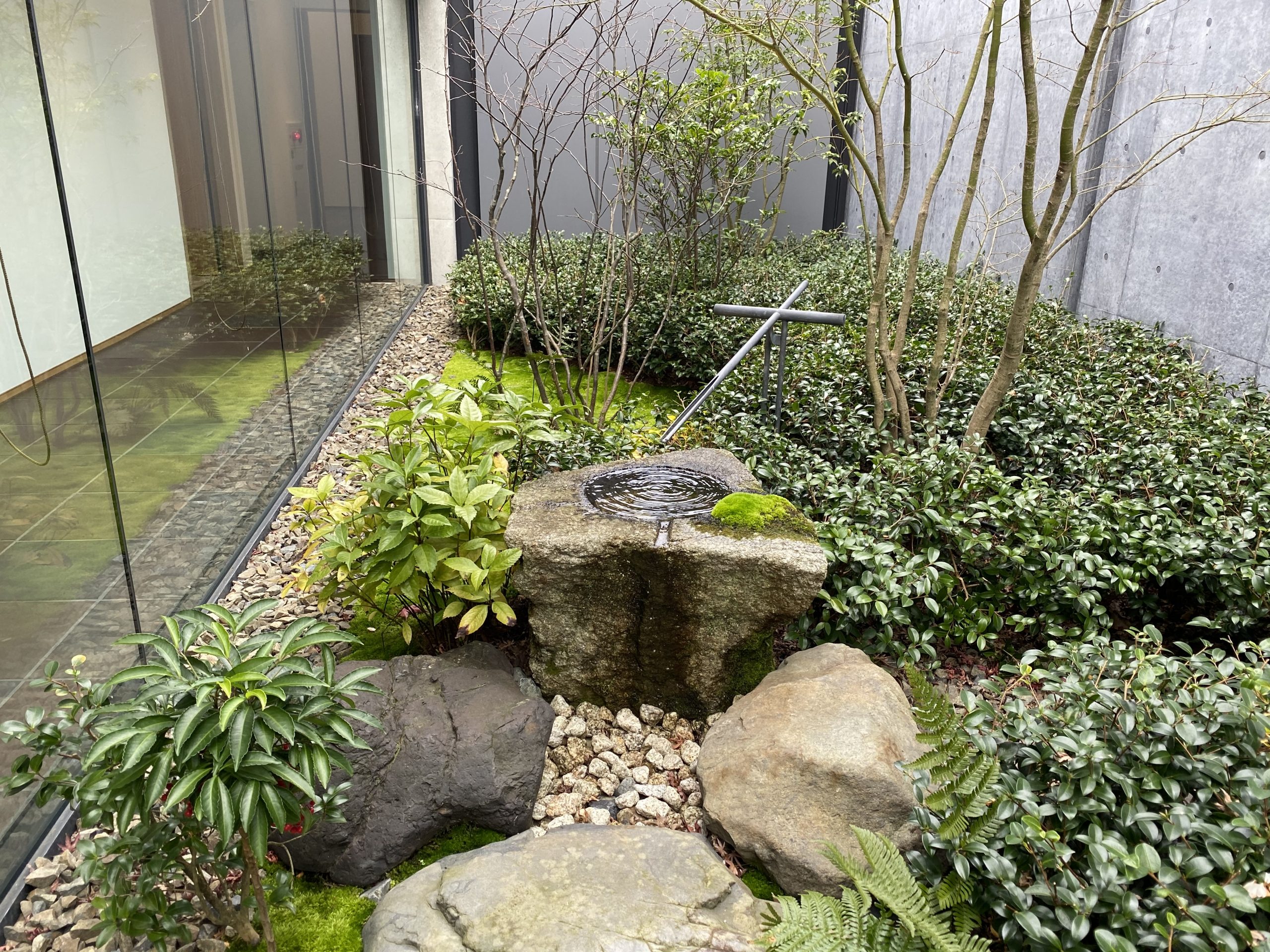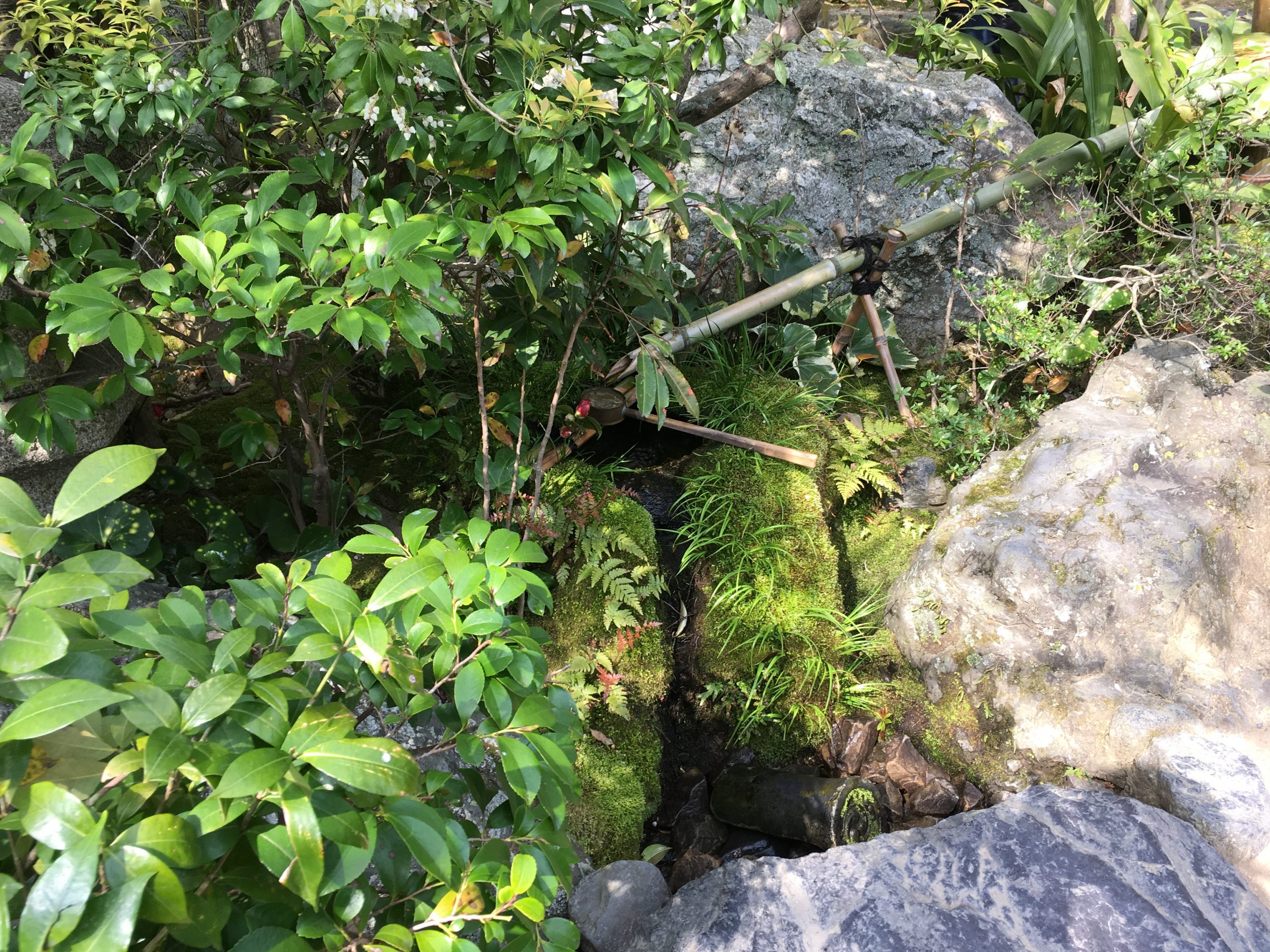Keywords: The Ueyakato Landscape Research Team's Japanese Garden Lexicon
Suikinkutsu : The Buried Water Harp
2023/06/30
 At Kyoto International Conference Center, the enchanting sounds of a suikinkutsu are combined with the beauty of the four seasons to create a welcoming reception space for guests.
At Kyoto International Conference Center, the enchanting sounds of a suikinkutsu are combined with the beauty of the four seasons to create a welcoming reception space for guests. At least since the tea garden’s emergence in the sixteenth century, Japanese gardens have been known for integrating us with nature not just through our eyes, but with all five senses. One especially effective means of inviting people into nature’s beauty is to use the sound of water. And by concealing the source of this sound, we can immerse our guests in the garden’s ambience even deeper. The result is the pleasant sound of water tinkling and chiming constantly in a bewitchingly syncopated rhythm. This is the charm of the suikinkutsu, the “buried water harp” sometimes installed underneath tea garden scenes to create soothing sounds from the reverberations of dripping water.
The suikinkutsu’s sounds derives from water dripping from the bottom of a porcelain jar that has been buried upside-down. A drip hole is drilled into the jar’s bottom and its mouth is sealed with cement so that when water hits the pool accumulating at the bottom, generating an enchanting warble. A pit is then dug at the bottom of which sand and backfill stones (known in Japanese as guri-ishi or “chestnut stones”) are laid down as a drainage layer for water to seep through. A well foundation is then placed inside to prevent surrounding earth from crumbling and cause the sound of the jar’s water to echo. Finally, the jar is packed into the well foundation using crushed stones. The overflow from a crouching basin arrangement installed above the underground jar completes the illusion of phantom water sounds emanating from nowhere.
The suikinkutsu’s appearance can be traced back to the Edo period (1603-1868), a time when both Japan’s warrior and merchant classes engaged in unprecedentedly lavish entertainment. After Japan’s modernization, use of this ingenious device continued and even flourished well into the early twentieth century. Yet thereafter, it suddenly fell out of fashion to the point where its existence was nearly forgotten by the public. It was not until the 1980s, when home-ownership in Japan was booming, that the suikinkutsu’s charm was suddenly rediscovered all over again.
The suikinkutsu thus seems to enjoy the greatest popularity at times when people have been particularly fascinated by how Japanese gardens can infuse a subdued expression of natural beauty with a sense of cheer and exuberant fun. While essentially an appendage to the crouching basin arrangement form, it presents virtually limitless possibilities for adding multi-sensory enjoyment to the serenity of Japanese garden scenery.
 Taizo-in Temple’s suikinkutsu arrangement was originally located inside its study hall (shoin), but about forty years ago was relocated nearby the temple’s outdoor pond garden Yoko-en where all visitors can enjoy it.
Taizo-in Temple’s suikinkutsu arrangement was originally located inside its study hall (shoin), but about forty years ago was relocated nearby the temple’s outdoor pond garden Yoko-en where all visitors can enjoy it.
